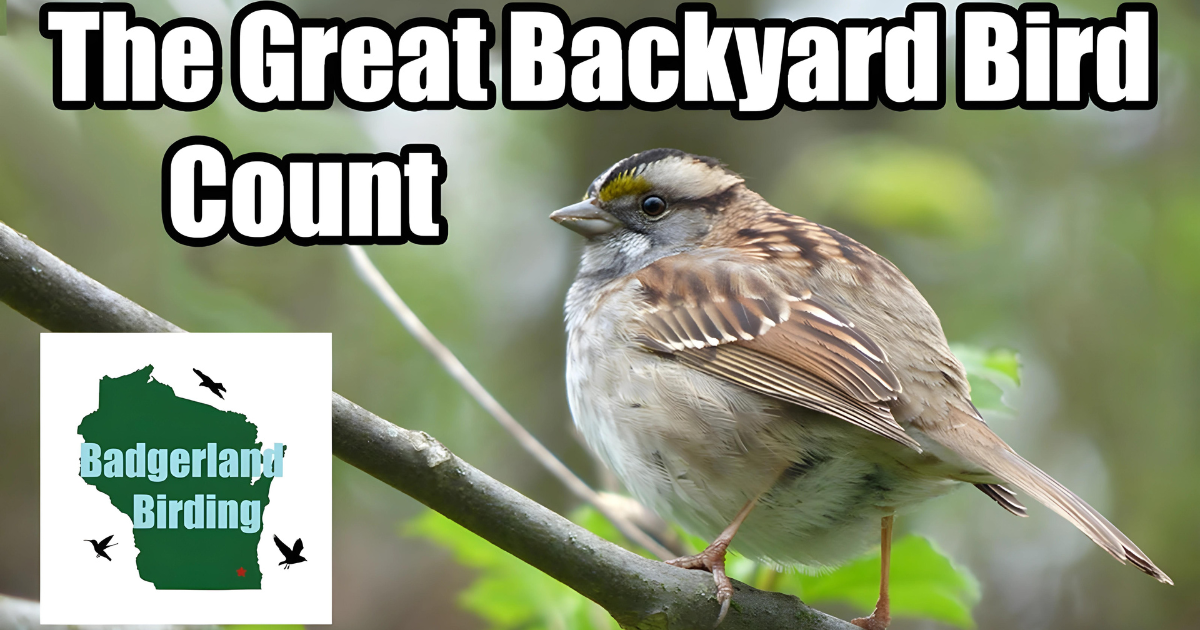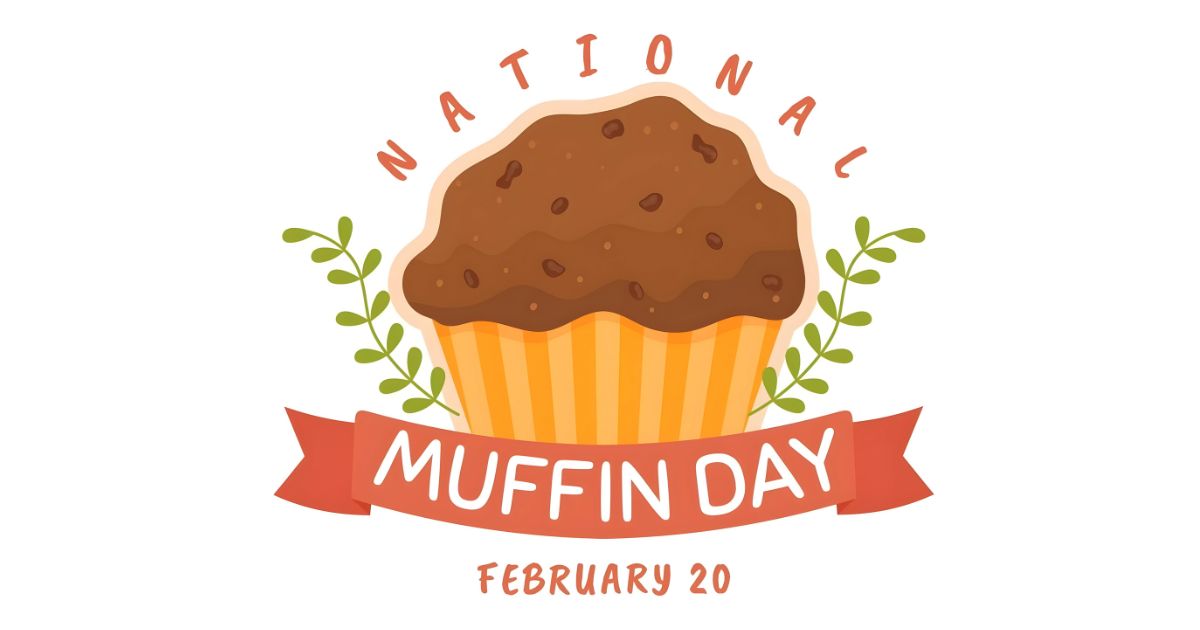The Great Backyard Bird Count (GBBC) is an annual event where bird watchers across North America come together to count and record the birds they see over four days in February. The event transforms bird watching into a scientific endeavour that allows amateur and professional birders to contribute valuable data on bird populations and distribution.
Read More: Digital News Planet
What is the Great Backyard Bird Count?
The Great Backyard Bird Count is a joint project run by the Cornell Lab of Ornithology and the National Audubon Society. It takes place over four days, usually the third weekend of February. During this time, participants are encouraged to watch and record the numbers and kinds of birds they see in their backyards, local parks, nature centres, or other green spaces.
The collected data allows researchers to study real-time bird distribution across the Western Hemisphere. It can reveal necessary information about where birds are overwintering, nesting, and migrating, as well as highlight global threats that birds are facing from habitat loss, climate change, and more.
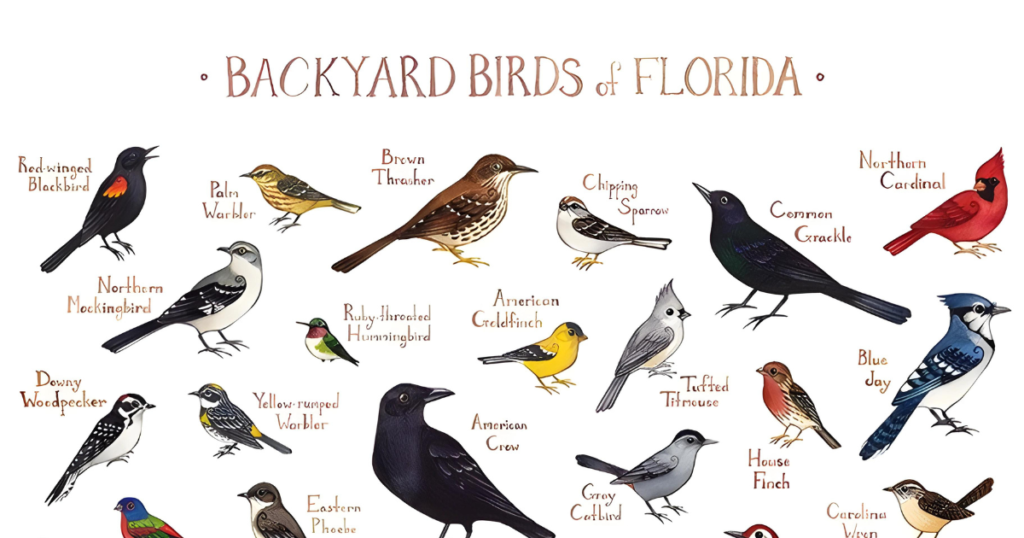
How to Register for the 2024 GBBC
Registration is now open for the 2024 Great Backyard Bird Count at www.birdcount.org. Create a free account that allows you to enter and save your bird checklists and explore real-time data from across the Western Hemisphere, showing what species are being spotted during the count.
Christmas Bird Count 2023-2024
Sponsored by the National Audubon Society for over 100 years, the annual Christmas Bird Count engages bird watchers to conduct full-day bird counts within established 15-mile-wide circle areas during one calendar day between December 14 and January 15.
The 2023-2024 Christmas Bird Count data collection occurs from December 14, 2023, to January 15, 2024. See the Audubon website for details on events near you.
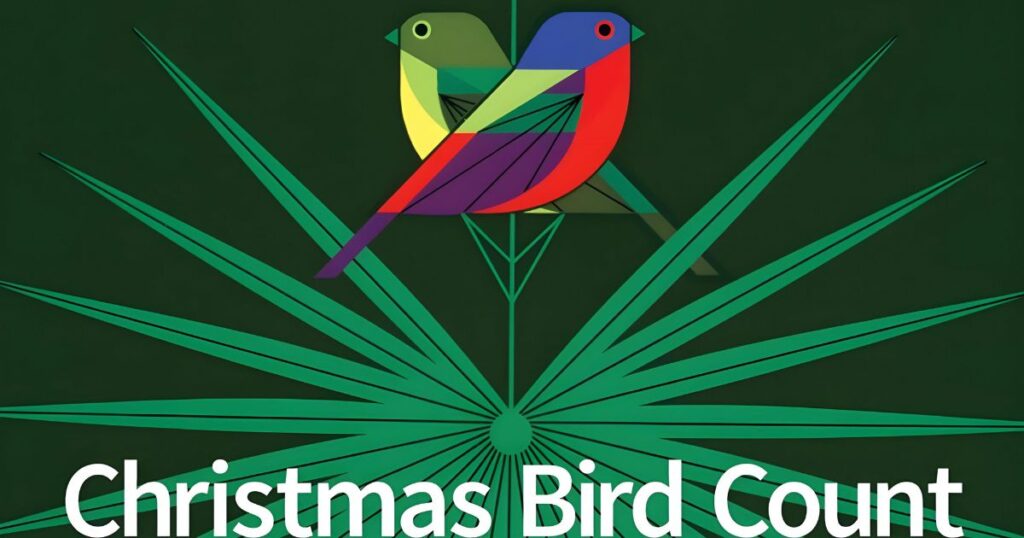
Why Participate in the Great Backyard Bird Count?
There are many reasons why bird enthusiasts may want to take part in the Great Backyard Bird Count:
- It only requires a minimum 15-minute bird count over the four days, making it easy for anyone to take part no matter how much or little time they have to devote to birdwatching.
- It doesn’t require travelling to new birding hotspots. You can participate by watching birds from your backyard, balcony, neighbourhood park, or nearby natural area.
- You’ll contribute scientific data that helps researchers track changes in bird populations over time and understand threats they may face across continents.
- It’s fun! You’ll likely see and identify new bird species you haven’t spotted before.
- It raises awareness about common, declining bird species that may visit backyards and urban green spaces.
- You can compare your checklist and bird sightings with other participants, as results are tallied and shared in near real-time on the GBBC website.
- It’s free and open to participants of all ages and birding skill levels across the United States, Canada, and many countries in the Western Hemisphere.
How the Great Backyard Bird Count Came About
The Great Backyard Bird Count stemmed from the avian influenza outbreak across North America in the 1990s. The outbreak spurred scientists to understand better the migratory habits and health of wild bird populations.
In 1998, the Cornell Lab of Ornithology and the National Audubon Society created the first Great Backyard Bird Count as a way for the public to collect vital data on the presence of birds throughout the continent during winter months.
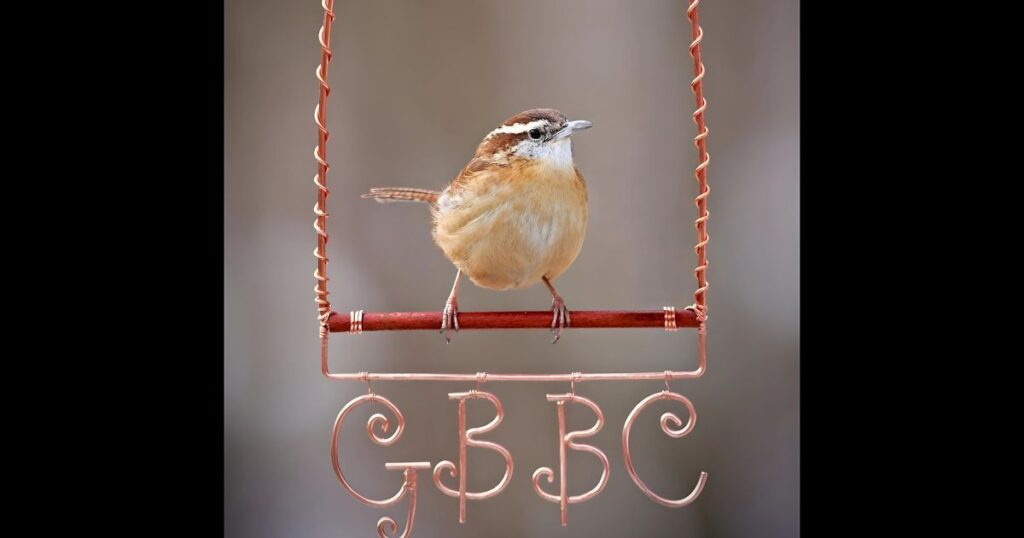
That inaugural year, bird watchers submitted over 13,000 bird checklists containing 81 species. Fast forward two decades later, and the 2021 count received more than 300,000 checklists reporting 7,150 species across 180 countries.
The event has become a global citizen science phenomenon engaging bird enthusiasts of all ages and abilities in collecting data on avian populations.
How to Take Part in the Annual Great Backyard Bird Count
Taking part in the annual Great Backyard Bird Count only requires a few simple steps:
- Mark Your Calendars
The GBBC takes place over four days, usually the third weekend of February. Mark your calendars and plan to spend at least 15 minutes or more watching birds on one or more of the count days.
- Choose a Location
While you can participate from just about anywhere, you’ll likely have more success observing a diversity of bird species if you watch from a location with a natural habitat like a backyard garden, park, wildlife preserve, wetland, forest edge, etc.
Urban city dwellers can still participate by observing bird feeders outside high-rise apartment windows or birds visiting neighbourhood parks.
- Identify and Count the Birds You See
As you spot birds, identify them by species and make a tally mark for each bird you observe. Keep a running list of all the bird species and numbers you see. Don’t worry if you don’t know all of them; an educational part of the event is learning how to identify new birds with field guides.
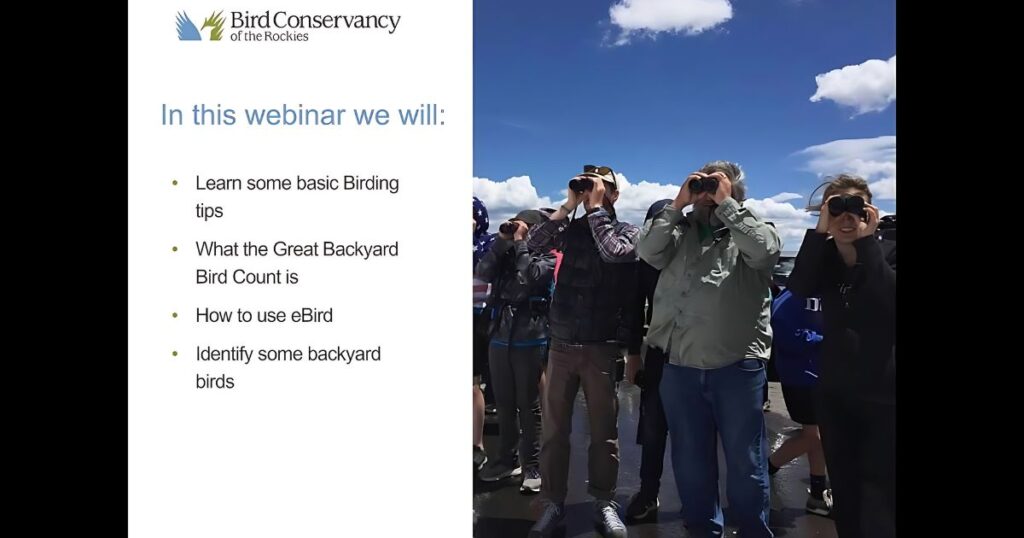
- Estimate the Time You Watched
You’ll need to estimate the time you spent watching birds from when you first started looking to when you ended your count. Even 15 minutes of observation can be valuable data to include. More extended counts are also great if you have more time.
- Submit Your Bird Checklist Online
Once your birdwatching session has ended for the day or weekend, log in to the Great Backyard Bird Count website to enter the bird species, number of individuals, location, observation time, and other details from your sightings.
Getting Ready for the Great Backyard Bird Count
A little bit of preparation and the right tools can help you participate fully in the excitement of the yearly Great Backyard Bird Count:
Choose Your Birdwatching Spot
Given the event’s name, watching birds from your backyard is appropriate! Consider setting up bird feeders, providing fresh water in baths or fountains, and having sheltered brush piles where birds may perch or nest.
Other prime birding locations include nature preserves, parks, gardens, wetlands, beaches, meadows, woodland edges, etc. Find a spot with a diverse natural habitat that attracts a variety of bird species.

Gather Bird Watching Gear
Having the right gear will make your bird counting efforts more enjoyable and successful:
- Binoculars – Choose quality binoculars with magnification between 10x and 12x so you can see key identification markings and features on birds.
- Bird guides and field books – Field guides with colourful illustrations and information on bird identification, behaviour, habitat, and bird calls are invaluable resources for the GBBC. Keep them close by as you count.
- Bird checklist – Print out a checklist of common birds you might see or record species on your mobile phone’s note app. This makes it easier as you tally species and numbers.
- Camera or smartphone – Taking pictures of unfamiliar birds can help you later confirm their identification with experts or bird ID apps. Share fun photos of your bird count on social media, too!
Brush Up on Bird Identification
An essential part of participating in the Great Backyard Bird Count is appropriately identifying the birds at your bird feeders or perched in nearby bushes and trees. Review bird field marks like plumage patterns, beak shapes, wing bars, eye rings, tail shapes, etc., to brush up on identification skills. Pay special attention to frequently confused species in your area.
Listening to recorded bird calls is also helpful for identifying birds you hear calling. Still, it can’t quite see while you’re counting.
Submitting Your Results for the Great Backyard Bird Count
At the end of your birdwatching session on one or more count days, you’ll need to log the vital statistics of your bird survey. Submit a complete checklist online with information about:
- Bird species seen – 45 species is the average for checklists, but some may report over 100 species!
- Number per individual species – It is important to record not just the diversity of birds seen but also an estimate of total individuals per species.
- Location – Enter the name and address of where you conducted your count to provide a geographical context for researchers.
- Observation time – Include the total time spent actively watching and counting birds. Fifteen minutes or multiple hours, all data contributes!
- Additional Efforts – Note if you used bird feeding stations, bird call recordings, or other tools to attract birds and support your count.
After entering this information, you can view your bird checklist and watch the real-time results roll in from the tens of thousands of participants across the hemisphere!
What Researchers Do with Great Backyard Bird Count Data
With over 100,000 participants now taking part annually in the Great Backyard Bird Count, researchers have an ever-growing pool of crowd-sourced data to analyze each year.
So what do ornithologists and conservation scientists do with this observational data from bird-loving citizens? Here are some of the key insights and research enabled by GBBC findings:
Understand Changes in Bird Distribution & Migration Patterns
By seeing where bird species occur over the 4-day February count window, researchers can look at bird distributions across the seasons and how migration or overwintering patterns may change over time.
Highlight Declining and Endangered Bird Populations
Suppose the numbers of a particular species have declined significantly or their distribution has shrunk based on GBBC data. In that case, it can provide an early warning signal to organizations investigating threats these species face.
Inform Habitat Restoration for Birds
Knowing the most commonly counted species informs habitat conservation efforts, indicating the natural areas needed to support healthy bird numbers based on their preferred nesting sites, migration stopover locations, food sources, etc.
Happy birding and counting in 2024! Be sure to invite friends along, too.
Conclusion
The Great Backyard Bird Count and other citizen science bird counting events in 2024 offer the perfect opportunity to combine your passion for birding with contributing valuable data. Simply spending a few minutes watching feathered friends in your backyard or at a nearby park can add to the growing knowledge ornithologists have about avian behaviour, populations, distributions and more.
As you enjoy spotting familiar sparrows or discovering new-to-you warblers, know that your birding efforts support research and conservation. Remember to invite along friends or family who can share in the excitement of the counts. By participating annually, you’ll watch patterns and trends emerge over time, showing the ebb and flow of bird life through your little corner of the world.
FAQs:
1: How do you do a bird count?
To do a bird count:
- Choose a location like your backyard, a park, or a natural area to observe birds for a set time, usually at least 15 minutes.
- Identify each bird species you see, keep tally marks for the number of individuals per species, and record the total time you spent counting.
- Submit your checklist data and details online to contribute to scientific research.
2: What is the GBBC India Ebird?
The Great Backyard Bird Count India and eBird are partner projects allowing bird watchers in India to submit bird checklists from the GBBC to be available on the eBird database for researchers to access.
3: What is the bird population in Australia?
Australia has over 800 species of native birds, with population estimates in the hundreds of millions. Australia’s most abundant bird species include the Zebra Finch, Noisy Miner, Red Wattlebird, Willie Wagtail, Magpie-lark, and Rainbow Lorikeet.
4: Which country has the most birds?
Colombia has the most bird species by country, with over 1,900 species, nearly 20% of the world’s total. Peru, Brazil, Indonesia, and Australia follow Colombia for most birds.
5: Where is the largest bird population in the world?
The largest migratory bird population in the world breeds in the Copper River delta and coastal wetlands of Alaska each summer, with an estimated 20 million shorebirds and waterfowl nesting and foraging in this vital habitat.
6: What is the rarest bird?
The rarest bird is a matter of scientific debate, but leading contenders for the title include the Poʻouli from Hawaii, which has likely gone extinct with just three confirmed sightings since 1976, and the Madagascar Pochard with a population once thought extinct but recently rediscovered to be less than 25 individual ducks.
7: Which country has the most parrots?
Australia has the most species of parrots by far, with over 50 types native to the continent. After Australia, tropical regions of South America and Africa contain the highest diversity of parrot species in the wild.
8: What is the top 1 most enormous bird in the world?
The ostrich is the most giant living bird, standing up to 9 feet tall and weighing over 300 pounds. Native to Africa, the ostrich is farmed worldwide for meat, feathers and leather.
9: Which bird Cannot fly?
The most giant bird unable to fly is the ostrich. Other flightless bird species include penguins, cassowaries, kiwi, and dodos, which are now extinct.
10: Which is the fastest bird?
The Peregrine Falcon is the fastest flying bird, reaching over 200 miles per hour when diving from great heights to catch prey. The spine-tailed swift and frigatebird also reach very high speeds in level flight.
11: Who is the smallest bird?
The bee hummingbird is the smallest bird in the world, averaging just 2 inches long and weighing less than a penny. This tiny bird lives only in Cuba.
12: What is the lightest bird?
The common firecrest is likely the lightest bird, averaging 0.20 oz or less than 6 grams.
13: What is the thinnest bird in the world?
One of the thinnest birds is the standard dipper, which averages just over half an inch thick from breast to back.
14: Do birds have teeth?
Birds do not have teeth, though they have varied bill shapes adapted for specialized diets like seed-cracking, catching fish, straining water, sipping nectar or tearing flesh.
15:What is the 2nd heaviest bird?
The common ostrich is the heaviest, while the second heaviest bird is the Dalmatian pelican, weighing 30 pounds on average.
16: What is the heaviest bird?
The common ostrich is the heaviest bird, weighing over 300 pounds. Though unable to fly, ostriches can sprint up to 45 miles an hour.
17: Which is the tallest living bird?
The ostrich is the tallest and heaviest living bird, reaching heights over 9 feet.

